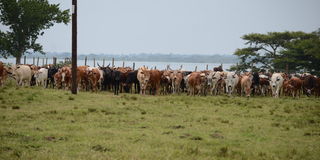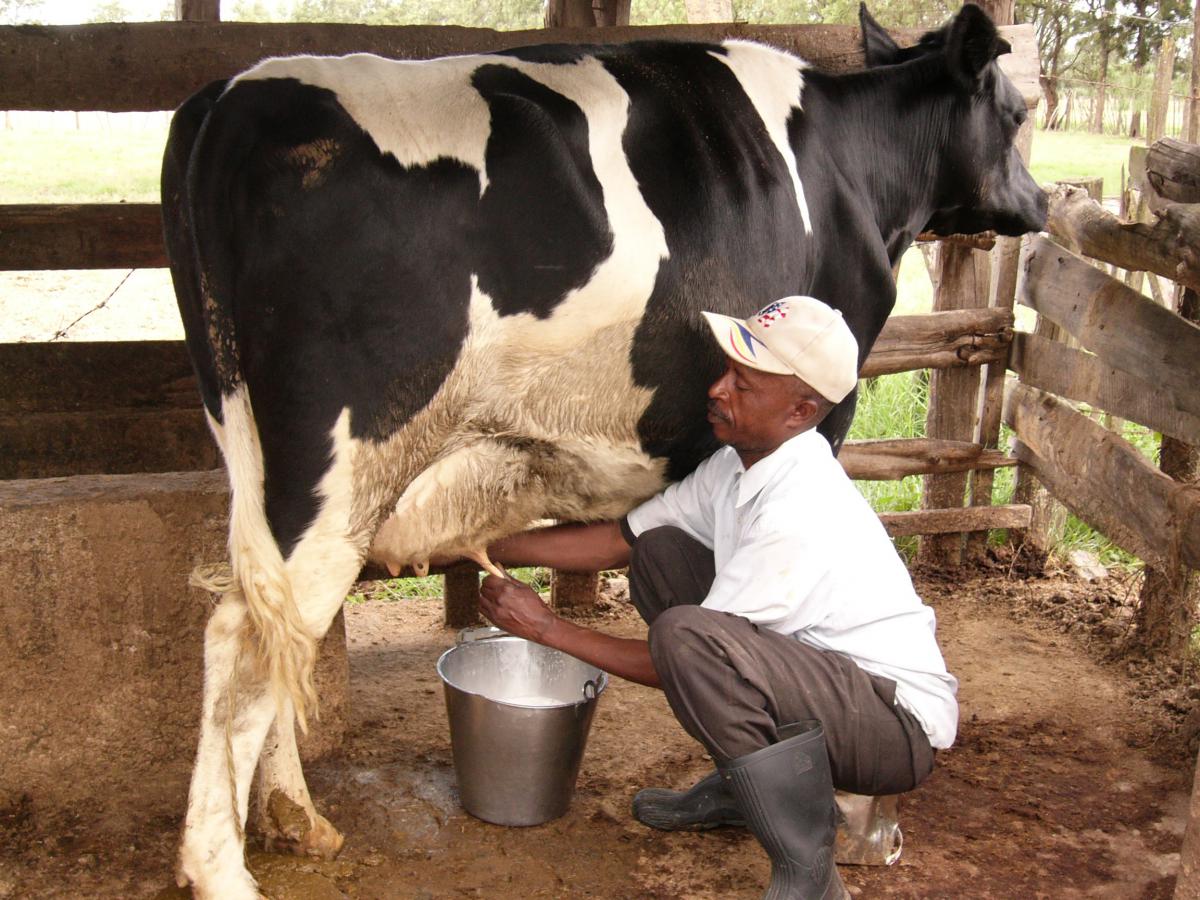Want to milk more money? Manage butterfat content

A herd of Zebu cow breed preserved at the Uganda National Animal Genetic Resources Centre (NAGRC) Stock Farm in Lusenke, Kayunga. Zebu produce milk of 4.3 per cent butterfat content. PHOTO/Edgar Batte
What you need to know:
Dr Moses Mwesigwa, a veterinary expert at the institute said during the recent Seeds of Gold Farm Clinic that the variation in butterfat content often puzzles dairy farmers.
“Many farmers end up frustrated when buyers complain about their milk thinking they added water after milking which may not be the case,” Dr Mwesigwa says.
Content
According to Dr Mwesigwa, butterfat content is affected by many factors. He says that some factors are beyond the control of the farmer while others can be controlled. He explains that up to 60 percent of the butterfat content is determined by the breed of the dairy cow, while other factors such as feeding, management and milking practices take up the rest of share.
Breed
Dr Mwesigwa explains that a cow’s breed determines its ability to produce a certain amount of butterfat.
“Therefore, the most important factor to take into consideration should be the careful selection of cows,” he says. He says that of all the common breeds of dairy cattle, the milk of the Jersey boasts the highest milk fat content of 5.5 per cent. At NaLIRRI, the institute keeps Viking Jersey breed which he says is ideal for Ugandan cattle farmers for its adaptability. The Viking Jersey was airlifted from Denmark, with Uganda being the first East African country to have this breed.
He adds that the Jersey is followed by Guernsey at 5.0 percent, Brown Swiss, 4.0 percent; Ayrshire, 3.9 percent and Friesians, 3.4 percent. “These improved breeds offer different milk needs. For instance, the Friesians are able to produce more milk although with low butterfat content. Therefore, it is obvious that milk from Jerseys and Guernseys will yield higher butterfat content than those from herds of Friesians,” Dr Mwesigwa says.
The local breeds, he adds, have a higher butterfat content although with low milk production which makes them a bad choice for commercial dairy farming.
Dr Mwesigwa explains that a pure Ankole breed has a fat content of 5.25 per cent while the Zebu shows a butterfat milk composition of 4.3 percent.
“But the Jersey, for instance, produces about 7 to 20 litres of milk compared to the local breed which produces about 3-5 litres of milk,” he says.
Feeding
Feeding dairy cows takes up more than 70 percent of the profits that can be earned from milking a cow. According to Dr Robert Mwesigwa, a nutritionist at NaLIRRI, a farmer must always get the feeding right.
Feeding practices, he says, can affect up to 20 per cent of the butter fat content and milk production at large. “Although the cow’s genetics controls the upper limits of fat content, it is necessary to feed a dairy cow on roughage and concentrates to maintain a good butterfat content,” Dr Mwesigwa says.
Milking time
According to James Mugerwa a retired veterinary officer in Mukono milking practices are important. He says that a cow should be in a cooperative mood at the time of milking by stimulating the nerves by massaging or washing.
“For best results, a cow should be milked within five minutes after stimulation. When the attitude of the cow is right, the butterfat content tends to be higher,” he says.
Other factors
Even among high-yielding breeds, butterfat content can vary.
Experts contend that the milking time, stage of lactation, age of the cow and climatic conditions can affect fat content in milk.
“The percentage of fat tends to decline slightly with age,” Dr Mwesigwa says.
“That is why it is important to stop milking cows after at least the fourth lactation,” he says.
Butterfat tests
FOSS Analytics offers rapid analysis of butterfat quality in raw milk with consistent test results. According to the Uganda National Bureau of Standards (UNBS), butterfat content tests are not yet a requirement of milk producers. But regulatory controls for the safe production, handling, processing, storage, transportation, marketing, distribution and sale of milk and milk products are in place.
Analytics, according to Møller, aid success in dairy farming in terms of standardisation. This is key in producing consistent quality and increasing profit margins.
«Consumer demands require assurance on food safety and meeting regulatory requirements,» Møller says.




